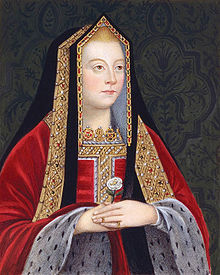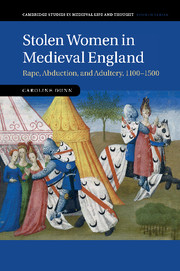The Brora Mine was indeed owned by the Dukes of Sutherland up to 1873. Although the area was already being mined, this particular colliery came into existence (c.1810) as a result of a partnership between William Hughes, a mining engineer and
William Young, lawyer and a sub factor of the Sutherland Estate (who became infamous for his part in the Clearances under Elizabeth, Countess & Duchess of Sutherland d.1839). Work continued in 1814 and 1815 not only on the mine but on the surrounding infrastructure, including a distillery, the development of a harbour and a railway to take the coal down to the sea. It was, however, during this period, financial challenges, mismanagement and accidents beset the mine before a survey by mining engineer, William Bald, reported favourably about the coal. Despite some misgivings the Sutherland family continued to back Young financially even though expenditure was vastly exceeding estimates. It all soon fell apart. The salt tax was abolished in 1823; its production then became unremunerative, and as coal was not in much demand among a people who were accustomed to, and could easily get, plenty of peat, the Brora works, after languishing for nearly five years with the 2nd Duke unwilling to sanction further expenses, were closed in 1828.
However, in 1872, the 3rd Duke of Sutherland re-opened Brora Colliery, and for a number of years had it under estate management. Queen Victoria visited the mine just after its reopening, travelling on the newly completed railway pulled by a locomotive named “Florence”. The colliery was managed by M.Crowe in 1893 before being leased to a Mr John Melville (c.1896). From this point, coal was mined for manufacturing purposes - specifically salt - and was eventually abandoned in 1975. It was the only Jurassic coal mine in Scotland and was never taken into state ownership.
The Kildonan Gold Rush was a gold rush that occurred in the Strath of Kildonan, Sutherland, in the Highlands of Scotland in 1869. Gold was first discovered in the area in 1818 when a solitary nugget of gold weighing about ten pennyweights was found in the River Helmsdale. It is claimed a ring was made out of this and is in the possession of the Sutherland family. But when public interest was sparked following a newspaper announcement in 1868, a gold rush started.
The credit for the discovery goes to Robert Nelson Gilchrist, a native of Kildonan, who had spent 17 years in the goldfields of Australia. On his return home, he was given the permission by the Duke of Sutherland to pan the gravels of the Helmsdale River. Many of the prospectors were novices but a hard core of miners from Australia and America helped to provide some much-needed expertise in gold recovery. In April 1869, however, the Duke of Sutherland introduced a system of licenses which cost one pound per month for each claim measuring 40 square feet. In addition to this, the prospectors were expected to pay a royalty of 10% on all gold found; not surprisingly, much gold was never declared but was used in barter for food, tools and accommodation. Two small 'towns' had come into being. Baille an Or - a settlement of huts (shanty town) catering for over 600 prospectors - was established by the banks of the Kildonan Burn, and Carn na Buth (meaning Hill of the Tents) served the workers on the Suisgill Burn. Very soon a 'saloon' was added to the Town of Gold (Baille an Or) and provided meals and accommodation for the mining fraternity.
However, the falling price of gold coupled with diminishing levels of finds and better opportunities in the local herring fishery, meant numbers fell to around 50 by the autumn. The Duke was losing potential income from salmon fishermen and deer stalkers, so in December he announced that “all exploration for gold would cease with effect from 1 January 1870"; despite this, the lure of gold tempted several opportunists over the following years.
Book Two: Burning Secrets
![Burning Secrets: A gripping historical mystery (Scottish Mysteries Book 2) by [Gray, Clio]](https://images-na.ssl-images-amazon.com/images/I/517IelqFl5L.jpg)
1869, Strontian, Scotland, a village on Ardnamurchan Peninsula, is inhabited by mining folk and crofters, eking out a living from the unforgiving land and turning a blind eye to the smugglers who plague the coast. But one man sets himself apart from the rest – Gustav Wengler, the owner of the mine and an eccentric mathematician, who isolates himself on Havengore Island with a collection of unexplained white monuments. His assistant Archie Louden acts as his only envoy to the outer world; however Archie never makes it home from an important mission to Copenhagen.
Historical background:
In 1830 sources write that "The village of Strontian is very pleasantly situated, directly at the head of Loch Sunart, the hills adjoining to which are crowned with beautiful and very thriving plantations. The Loch itself is here extremely picturesque ... In a neighbourhood civilized and populous it would speedily become a favourite retreat."
In the 1830s, residents from Strontian and the surrounding area were among the first to use the "
Bounty Scheme" to emigrate to Australia.
The Brilliant, a Canadian-built ship, sailed from Tobermory to New South Wales in 1837 with 322 passengers, 105 of whom were from Ardnamurchan and Strontian. The
Bounty Scheme, which ran from 1835 to 1841, was proposed by Edward Gibbon Wakefield as a way for Australian settlers to subsidise the emigration of skilled tradespeople from Britain.
In the hills to the north of Strontian, lead was mined in the 18th century and in these mines the mineral strontianite was discovered, from which the element strontium was first isolated. The history of mining in the Strontian area dates to 1722. The first large-scale application of strontium was in the production of sugar from sugar beet. Although a crystallisation process using strontium hydroxide was patented by Augustin-Pierre Dubrunfaut in 1849, the large-scale introduction came with the improvement of the process in the early 1870s. The Strontian mine was abandoned by June 1889.
Book Three: Hidden Pasts
![Hidden Pasts: A gripping historical thriller (Scottish Mysteries Book 3) by [Gray, Clio]](https://images-na.ssl-images-amazon.com/images/I/51OIK85-rNL.jpg)
Hestan Island, marooned in the Solway Firth, is tethered to the mainland at low tide by a causeway called The Rack; Hestan was home to two men quietly living out their lives, until a boy is almost crushed to death in their tiny copper mine, when their shared past begins to unravel. Over at Balcary House, Brogar Finn and Sholto McKay arrive, and soon become involved in the affairs on Hestan, which in turn leads them back through the bloody wars of
Crimea and the lands of the Tartars.
Historical Background:
The isle of Hestan lies at the mouth of Auchencairn Bay in the region of Dumfries and Galloway in the former county of Kirkcudbrightshire. A lighthouse was built on the eastern side of the island by Alan Stevenson in 1850, with a small cottage of the light-keeper. Other notable buildings in the are include Balcary Tower, built c. 1860, for the french mistress one one Colonel Johnstone when he was Laird of Auchencairn House, which itself was built around this time for Ivie Mackie, Lord Mayor of Manchester (1857 - 1860) - though I can find very little on any of these real-life characters!
At certain conditions of low tide the island is accessible on foot as there is a natural causeway of shingle and mussels from Almorness Point to the northern tip of Hestan (known as The Rack). The island can also be reached on foot from Rockcliffe during the time of spring tides, but requires wading knee deep across the lowest parts of the river Urr out on the mudflats.
 Synopsis: She was the mother of Henry VIII and wife of Henry VII, but who was Elizabeth of York? Raised as the precious eldest child of Edward IV, Elizabeth had every reason to expect a bright future until Edward died, and her life fell apart.
Synopsis: She was the mother of Henry VIII and wife of Henry VII, but who was Elizabeth of York? Raised as the precious eldest child of Edward IV, Elizabeth had every reason to expect a bright future until Edward died, and her life fell apart. I will applaud the author for taking on the person of Elizabeth. Very little is really known about this woman who lived through so much yet remained in the background for a greater part of her life. She was the peace-weaver between the Lancastrians and Yorkists; she was the sister and mother of kings; but she had no political role in her husband's reign - except for that of wife and mother.
I will applaud the author for taking on the person of Elizabeth. Very little is really known about this woman who lived through so much yet remained in the background for a greater part of her life. She was the peace-weaver between the Lancastrians and Yorkists; she was the sister and mother of kings; but she had no political role in her husband's reign - except for that of wife and mother.

![The Traitor and the She Wolf by [Adkins, David]](https://images-na.ssl-images-amazon.com/images/I/419mpcTxduL.jpg)












![Deadly Prospects: A gripping historical thriller with a brilliant twist (Scottish Mysteries Book 1) by [Gray, Clio]](https://images-na.ssl-images-amazon.com/images/I/61vQm1PkyRL._SY346_.jpg)
![Burning Secrets: A gripping historical mystery (Scottish Mysteries Book 2) by [Gray, Clio]](https://images-na.ssl-images-amazon.com/images/I/517IelqFl5L.jpg)
![Hidden Pasts: A gripping historical thriller (Scottish Mysteries Book 3) by [Gray, Clio]](https://images-na.ssl-images-amazon.com/images/I/51OIK85-rNL.jpg)
![An English Varangian by [Stein, Gabriel ]](https://images-eu.ssl-images-amazon.com/images/I/51dLf5xx7eL.jpg)

